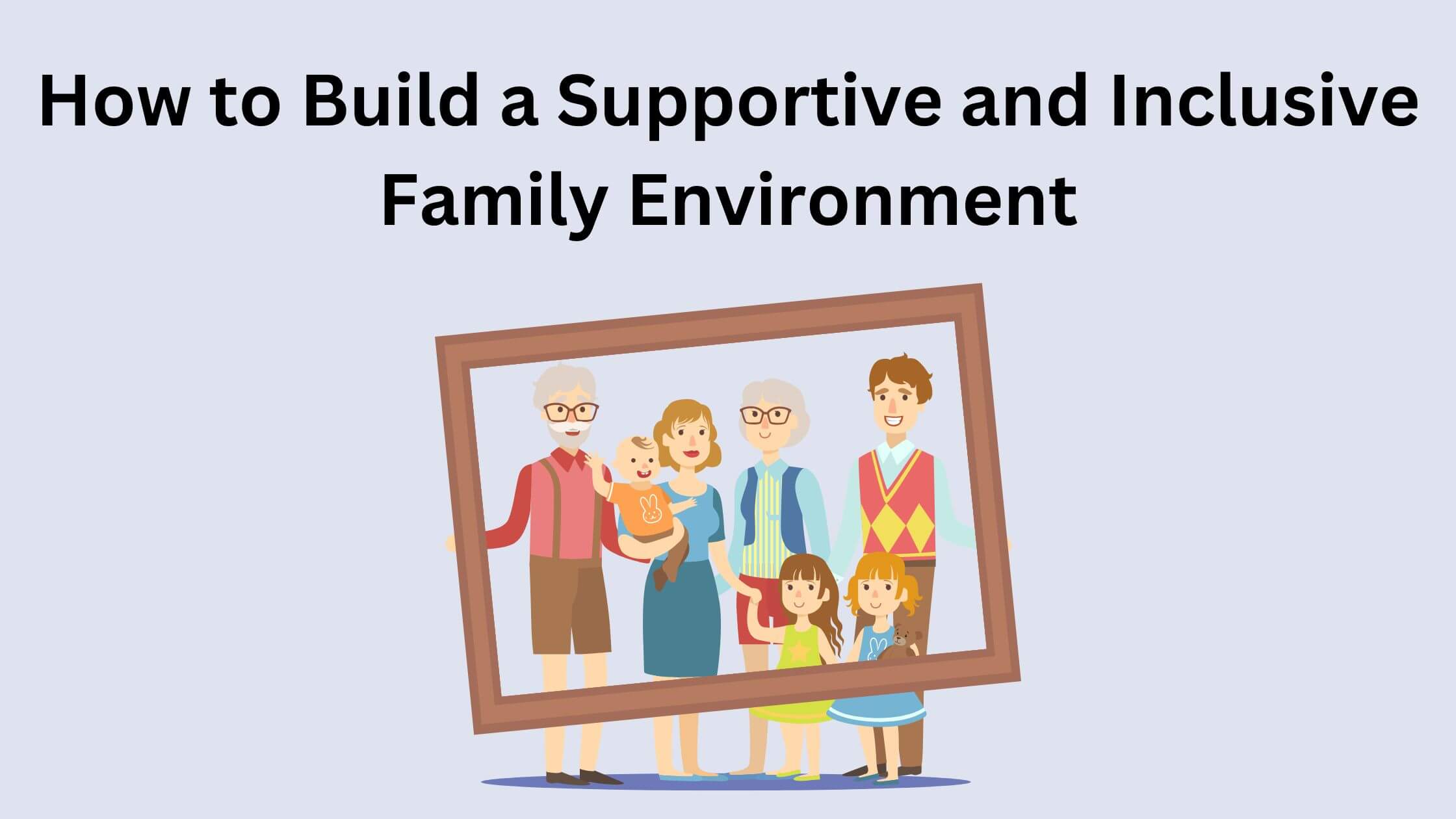A supportive family environment is the foundation upon which a lifetime of well-being, happiness, and success are built. It is the safe haven where individuals can grow, learn, and thrive, surrounded by love, care, and understanding. In this article, we will explore the importance of building a supportive family environment, its benefits, and practical strategies for creating a nurturing atmosphere that fosters emotional intelligence, resilience, and strong relationships.

Why is a Supportive Family Environment Important?
A supportive family environment is essential for the physical, emotional, and psychological well-being of its members. It provides a sense of security, stability, and belonging, which are crucial for healthy development and growth. Research has consistently shown that children who grow up in supportive families have better mental health, academic performance, and social skills compared to those who do not. Moreover, a supportive family environment helps to:
- Develop emotional intelligence and empathy
- Foster open communication and conflict resolution skills
- Build self-esteem and confidence
- Encourage positive relationships and social skills
- Promote healthy coping mechanisms and stress management
- Support academic achievement and career development
Benefits of a Supportive Family Environment
A supportive family environment has numerous benefits that extend beyond the immediate family circle. Some of the benefits include:
- Stronger Family Bonds: A supportive family environment helps to create strong, lasting bonds between family members, which can lead to a sense of unity and cooperation.
- Better Mental Health: Growing up in a supportive family environment can reduce the risk of mental health issues, such as depression, anxiety, and substance abuse.
- Improved Academic Performance: Children from supportive families tend to perform better academically, have better attendance, and are more likely to graduate from college.
- Increased Resilience: A supportive family environment helps individuals develop coping skills, which enable them to better navigate life’s challenges and setbacks.
- Better Social Skills: Individuals from supportive families tend to have better social skills, which are essential for building strong relationships and achieving success in personal and professional life.
Practical Strategies for Building a Supportive Family Environment
Building a supportive family environment requires effort, commitment, and a willingness to create a nurturing atmosphere. Here are some practical strategies to get you started:
- Communicate Effectively: Encourage open and honest communication among family members. Listen actively, express empathy, and validate each other’s feelings.
- Show Physical Affection: Physical touch is essential for emotional well-being. Hug, kiss, and cuddle with your loved ones to show affection and love.
- Spend Quality Time Together: Engage in activities that bring joy and happiness to your family. It could be playing games, cooking together, or going on outings.
- Practice Empathy and Understanding: Put yourself in your family member’s shoes and try to understand their perspective. Show empathy and validation to create a sense of safety and trust.
- Set Boundaries and Rules: Establish clear boundaries and rules to create a sense of structure and discipline. This helps to promote responsibility and accountability.
- Foster a Growth Mindset: Encourage a growth mindset by praising effort, progress, and resilience. Avoid criticism and focus on building self-esteem.
- Show Gratitude and Appreciation: Express gratitude and appreciation for each other’s efforts and accomplishments. This helps to create a positive and supportive atmosphere.
FAQs
Q: What are some common challenges families face in building a supportive environment?
A: Common challenges include busy schedules, conflicts, and generational differences.
Q: How can I create a supportive environment for my children?
A: Spend quality time with your children, listen to them, and validate their feelings. Encourage open communication and set clear boundaries and rules.
Q: How can I foster a sense of unity in my family?
A: Engage in activities that bring joy and happiness to your family, such as game nights, family outings, or volunteer work.
Q: What are some signs of a supportive family environment?
A: Signs include open communication, physical affection, empathy, and a sense of trust and understanding.
Conclusion
Building a supportive family environment is a vital investment in the well-being and happiness of your loved ones. By fostering a nurturing atmosphere, you can create a sense of security, stability, and belonging, which are essential for healthy development and growth. Remember, a supportive family environment is not a destination; it’s a journey that requires effort, commitment, and a willingness to create a positive and loving atmosphere. By following the practical strategies outlined in this article, you can build a strong, supportive family environment that will last a lifetime.
Closure
Thus, we hope this article has provided valuable insights into Building a Supportive Family Environment: A Cornerstone for a Lifetime of Well-being. We thank you for taking the time to read this article. See you in our next article!